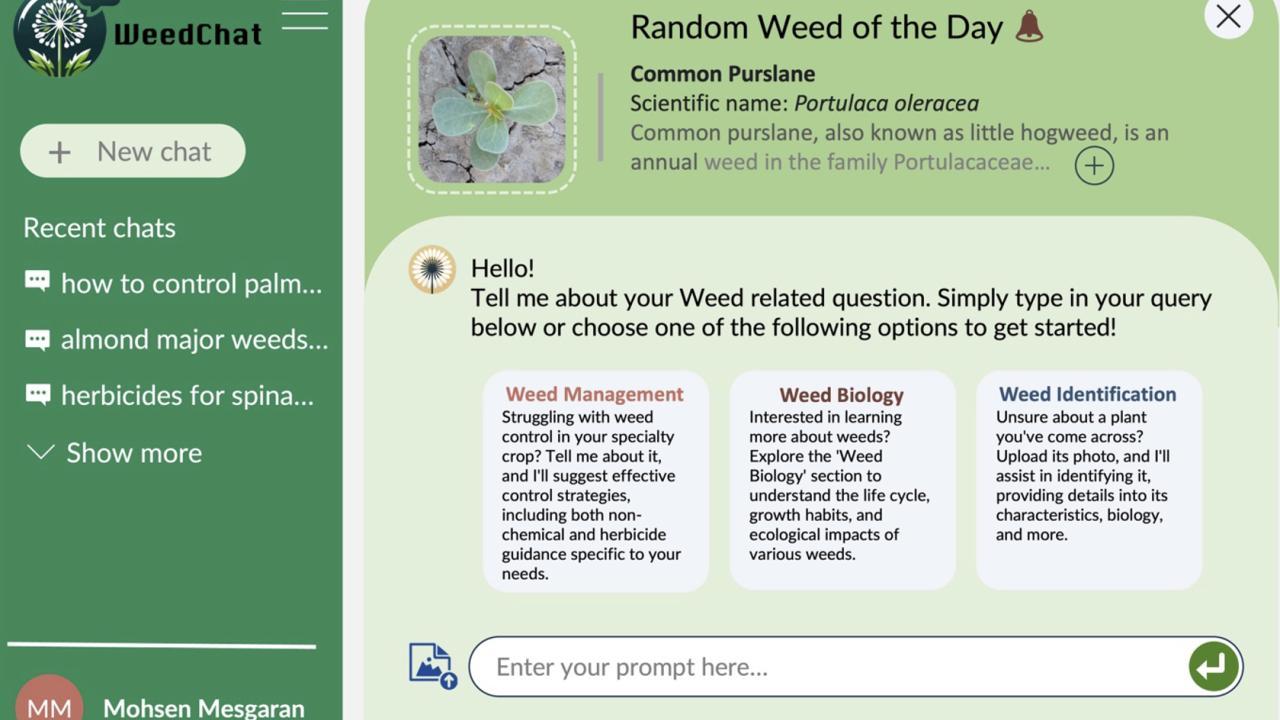
WeedChat: An AI-Powered Chatbot to Answer Thorny and Weedy Questions
Researchers at the University of California, Davis, are developing a chatbot powered by artificial intelligence, or AI, to help growers, backyard gardeners, landowners and others identify and treat weeds.
WeedChat will have access to and train itself on a broad array of papers, books, journals and other data to provide real-time, accurate, comprehensive information about weeds and invasive plants. Mohsen Mesgaran, an assistant professor in the Department of Plant Sciences, describes it as a “version of ChatGPT that … will be trained, fine-tuned and with all the data we have on weeds.”
Gathering the data and training
The most time-intensive part of developing WeedChat is compiling the database. The team will also train, validate and test WeedChat to ensure its accuracy, said Alireza Pourreza, an associate professor of Cooperative Extension in the Department of Biological and Agricultural Engineering.
This process involves inputting data into the AI model, evaluating its responses to related queries for accuracy and refining its performance. The team will also assess WeedChat’s ability to generate accurate responses when presented with new, previously unseen information.
“It’s sort of asking the machine to figure out the weed issue and recommend a relevant treatment,” Pourreza said.
Validation involves confirming the answers provided by WeedChat are consistently accurate.
“We want to fine-tune a model that generates more accurate and more consistent responses related to questions about different types of weeds, treatments, side effects and everything that the consumer needs to know about that specific weed and the herbicide that is needed, or any other biological control or mechanical control,” he said.
It will likely take two years before the project is finished, though a beta version may be shared with weed scientists prior to that for testing and feedback.
